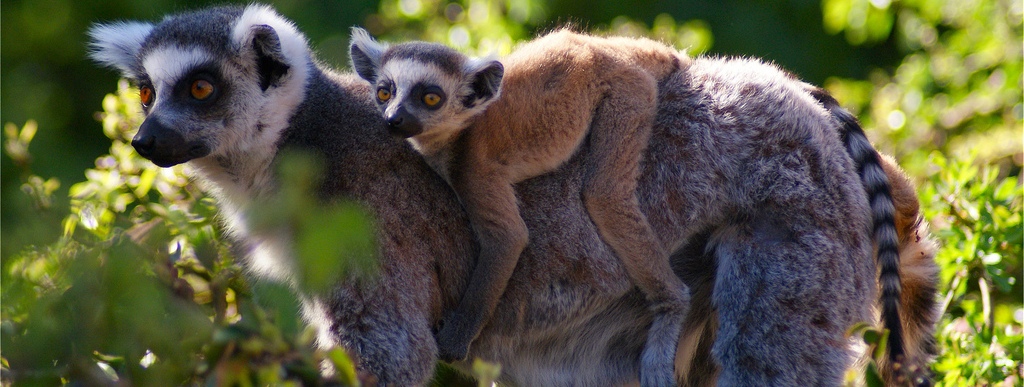Ring Tailed Lemur
Lemur catta
Habitat: The ring-tailed lemur lives in dry brush and scrub, as well as closed canopy forest. Unlike other lemur species it is found in open areas and will walk along the ground as well as moving between the trees.
Threats: Madagascar has suffered massive habitat loss over the last few decades. Fires, over-grazing by livestock, tree-cutting for charcoal production, and development have all contributed to the severe changes that this unique island has see. The ring-tailed lemur is still hunted in many areas and are kept as pets
Information: They are more terrestrial than other lemurs, they love to run, climb and jump from branch to branch and they just as confident on the ground. This species is named after the prominent tail markings, which both male and female possess. The rest of their body is grey to brown-black with white under parts. Like all lemurs these lemurs are endemic to Madagascar, a large island off the coast off east Africa. Ring tails are only found in south-central and southwest of the island.
Social Behaviour: They live in multi-male / multi-female groups, with 1 alpha female controlling the group. Females are extremely dominant and always win disputes with males. In the wild the group size averages 17 animals
Food: The diet consists of 70% fruits, 25% leaves, 5% flowers, bark, sap and herbs
Breeding: They reach maturity at 21-30 months and have a gestation period of 135 days. They give birth every 12 to 24 months in the spring to a single young
Map: Red = Locations Found 824








